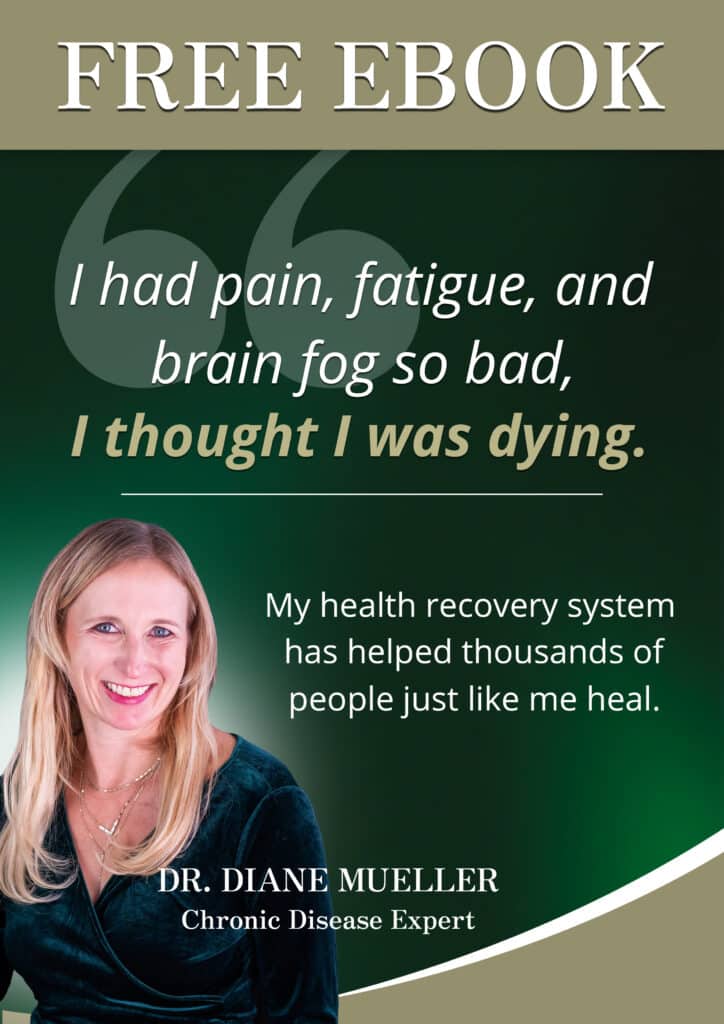Written by Dr. Diane Mueller
Antibiotic Treatment for Lyme Disease is much more complicated than just using Doxycycline. In fact, use of doxycycline only can lead to problems as doxy will only address one of the three morphologies of Lyme Disease. We dive in how to treat all the shapes of Borrelia (Lyme Disease).
Key Takeaways
- Effective Lyme disease treatment requires antibiotics that target all three forms of Borrelia bacteria: spiral (S), intracellular (L), and cystic forms. Using doxycycline alone is inadequate and may lead to relapse as it only addresses the spiral form.
- Incorporate Biofilm Disruptors: Borrelia bacteria shield themselves with biofilms that make them resistant to antibiotics. Adding biofilm disruptors like N-acetylcysteine (NAC) or serrapeptase to the treatment regimen enhances antibiotic effectiveness by breaking down these protective barriers.
- Use Pulsing Therapy for Better Results: Pulsing therapy involves cycling periods of antibiotic use with breaks to allow dormant bacteria to become active and more susceptible to treatment. This strategy helps address Borrelia’s ability to hide and improves overall treatment efficacy.
- Herbal medicines are often preferred initially due to lower recurrence rates and fewer side effects compared to prolonged antibiotic use. They are less disruptive to the body’s microbiome, which is crucial for regulating the immune system.
- Ticks can transmit multiple infections like Bartonella and Babesia alongside Lyme disease, requiring additional specific treatments. Monitoring and adjusting treatment to manage Herxheimer reactions (symptom flare-ups due to bacterial die-off) is important to reduce inflammation and discomfort.
Table of Contents
Antibiotics and Lyme Disease Treatment
Our search for antibiotics for Lyme disease focuses on certain types and how they affect Borrelia’s different shapes.
Types of Antibiotics Used for Lyme Disease
Doxycycline, a common antibiotic, is typically the first line of defense against Lyme Disease. However, since the treatment requires specific antibiotics to target different bacteria forms, a regimen consisting of just Doxycycline isn’t sufficient.

Morphologies (shapes) of Borrelia
Borrelia, the Lyme disease-causing bacterium, exhibits flexibility by morphing into three disparate shapes. Hence, personalized lyme disease treatment becomes essential to address all shape variations. To this end, understanding each form proves crucial. Multiple rashes scattered or at a single site often accompany Lyme disease, presenting an additional layer to consider in treatment plans.
S (spiral form)
The spiral shape, commonly associated with Borrelia, necessitates specific antibiotics.
The S form is the form that is initially contracted for Borrelia. Drugs typically used for this stage include Unicef, Ceftin, amoxicillin, penicillin, cedar, suprax, and niacin. Doxycycline is often given here. The trouble with doxycycline is that it can cause Borrelia to morph into one of the other morphologies. Many people feel initially better with doxycycline use but then find themselves relapsing later.
L (intracellular form)
Secondly, the intracellular form hides within body cells, demanding extensive medical strategies to efficiently target and eliminate it.
Cystic form
Lastly, the cystic form presents a unique challenge, given its ability to lay dormant and then reactivate. As such, antibiotic treatment to remove this quiet but potential threat warrants careful consideration.
Typically, in order to use antibiotics well to treat Lyme, you will want to use one from all three morphological categories. Many doctors treat in different ways using antibiotics. We recommend that if you go the antibiotic route, you will want to be on antibiotics for all three morphologies, but to add them one at a time.
Have Lyme Disease or suspect you do?
Additional Therapies When Using Antibiotics
Biofilm Disruptor
Borrelia, the bacterium responsible for Lyme disease, is known for its clever defense: biofilms. These protective layers on the bacterium serve as shields, making treatment with antibiotics challenging. A viable solution? Biofilm disruptors. Substances like NAC or serrapeptase effectively puncture these barriers, allowing the antibiotics to penetrate and work more effectively. Attributable to its ability to disintegrate the biofilm protection, the use of such disruptors complements the antibiotic treatment, increasing its effectiveness in treating Lyme disease.
Pulsing Therapy
We also recommend pulse therapy for antibiotics or herbs. Since Borrelia has an ability to move, to hide and to burrow into tissues, but taking breaks from antibiotics, we allow the Borrelia to come out of hiding so that the antibiotics can work better. An example of pulse therapy is three weeks on treatment, one week off and repeating many times. When working with the cystic forms of borrelia, it is often best to pulse more frequently such as 5 days on 2 days off or 4 days on, and three days off.
Why We Use Herbal Treatments for Lyme Disease

We often use herbal medicine first, before drugs. It’s because we have seen lower recurrence rates with herbal medicine. Some of this is likely due to the strong negative impact triple antibiotic therapy can have on our microbiome. By microbiome, we mean the good microorganisms in our body. This includes those in our skin, gut, genitals, and sinuses.
Our microbiome is key to regulating our immunity. Disrupting it with triple antibiotic therapy can cause long-lasting damage. Recovery from this can take years. In our professional opinion, antibiotics are sometimes essential. But, it’s worth trying herbs first. They work most of the time and have fewer side effects than antibiotics.
Challenges in Antibiotic Treatment
Lyme Disease Co-Infections
Also of note with working with antibiotics is the treatment of the coinfections. When insects bite, they do not selectively choose what infections they transfer. Most insects have more than one infection inside of them. Therefore, when you contract Lyme Disease, it is likely that you have not only been infected with Borrelia, but also with another infection carried by the insect. Just like with Borrelia, other infections can be treated by choice of antibiotics or herbal medicine.
Other infections that are common to have with Borrelia:
Bartonella: Typically treated with Azithromycin, rifampin, cipro, or clarithromycin. Methylene blue also works well. If you use methylene blue, make sure you have your doctor test you for a G6DP deficiency. This is needed to make sure that methylene blue is safe for you.
Babesia: Atovaquone or Plaquanil. + Azithromycin or Most of the time two drugs are warranted.
Herxing
Herxing is another thing that we need to talk about here. Herxing is a term used for the detoxification reactions that can come from Lyme Disease Treatment. When Borrelia dies, it releases toxins. If your body is subjected to more toxins than it can handle, the toxins will back up in your body. This is called a herxheimer reaction or herxing.
While some people try to push through this, it is not recommended. Herxing causes an increase of inflammation and an increase of symptoms. It can actually slow down the treatment process and make your day to day life a lot worse. If you start to herx, it will feel either like the flu or like worsening of your symptom picture. Do not try to push through it.
The best thing to do is to slow down the dosage of the antibiotics, add detoxification support and talk to your lyme literate doctor about it!
For more information on the topic of Lyme Disease Treatment See Our Blog Below:
Conclusion
The biggest take home message with antibiotics treatment for Lyme Disease is this:
Make sure you are treating all three forms of Borrelia (even if you are treating early on)
-
Be sure that you are including a biofilm disruptor
-
Be sure that you are pulsing therapy.
-
Consider treatment of coinfections
-
Be careful about not herxing
Free Lyme/Mold Webinar: "Why Am I Still Sick?"
Have Lyme Disease or suspect that you do?
We have helped thousands of
people restore their health
and quality of life by diagnosing
and treating their Lyme Disease.
“Dr. Mueller’s approach to medicine is refreshing! There is only so much you can do with western medicine and in my life I was needing a new approach. By addressing the whole body, nutritional diet factors, environmental factors, blood work, and incorporating ideas I had not previously known, I was able to break through with my conditions. I am not only experiencing less pain in my life, but through the process of healing guided by Dr. Diane Mueller, I am now happy to say I have more consciousness surrounding how I eat, what to eat and when things are appropriate. Living by example Dr. Mueller has a vibrancy that makes you want to learn and know more about your body and overall health. I highly recommend her to anyone looking for new answers, a new approach to health, or in need of freedom from pain and limitations.”
-Storie S.
Kihei, HI
Lyme Disease is Often Misdiagnosed as Fibromyalgia, Chronic Fatigue, Depression,
or Other Illnesses
Have Lyme Disease or suspect you do?



One Response